Exploring Tiny Home Designs for Modern Living
Modern living calls for innovative solutions, and tiny home designs present a captivating pathway to sustainable and practical living. When you explore tiny home designs, you're opening doors to myriad possibilities that blend functionality with style. Whether you're drawn to the minimalistic charm of tiny house interior designs or the clever space-utilization of tiny home blueprints, there’s a design that matches your vision. You might consider tiny house on wheels plans if mobility intrigues you, or delve into tiny home construction plans when you're ready to lay foundations. Affordable tiny homes echo a lifestyle statement, challenging traditional norms and promoting eco-conscious, streamlined living. As you learn how to build a tiny house, each step unravels the intricate dance between aesthetics and practicality. Peruse the best tiny house kits to discover how these homes encapsulate diverse tiny house design ideas, transforming even the simplest concepts into modern architectural marvels. Embrace a lifestyle shift to tiny house living, where every element of design plays a pivotal role in creating spaces that are not only cost-effective but deeply personal and tailored to your unique needs and desires for a modern sanctuary.

Understanding the Appeal of Tiny Homes
Tiny homes captivate many because they offer more than just a place to reside. Their allure lies in their ability to simplify life, encouraging you to focus on experiences rather than possessions. In tiny house living, the space you inhabit reflects a commitment to minimalism, often leading to a more meaningful lifestyle. Simplicity and intentionality define these spaces, offering you freedom that traditional homes may not.
Cost-effectiveness is another significant draw. Affordable tiny homes allow you to own property without shouldering massive financial burdens. With tiny home blueprints, you can customize efficiently to suit your needs without overspending. This affordability opens up opportunities to invest in other life pursuits, enhancing your quality of life while reducing stress about housing expenses.
An intriguing unpopular opinion about tiny homes suggests that they might limit living standards due to their size. However, proponents argue that the compact nature of tiny homes enhances creativity. Tiny home designs push you to innovate within limited square footage, leading to unique and efficient tiny house interior designs that maximize every inch. This creative challenge becomes a rewarding experience that standard homes often don't offer.
Environmental considerations further enhance the appeal. Tiny homes usually consume fewer resources, aligning with sustainable living goals. Choosing tiny house design ideas focused on eco-friendliness, such as solar panels or rainwater collection, contributes positively to the planet. It’s a practical response to growing environmental awareness, reflecting a commitment to reducing the ecological footprint.
Mobility adds another layer to the appeal of tiny homes. With tiny house on wheels plans, you have the flexibility to change locations whenever desired, a feature particularly appealing to those who crave adventure. The best tiny house kits support this mobile lifestyle, making these structures adaptable and versatile. You embrace the freedom of the open road while carrying the comfort of home with you, offering endless opportunities for exploration.
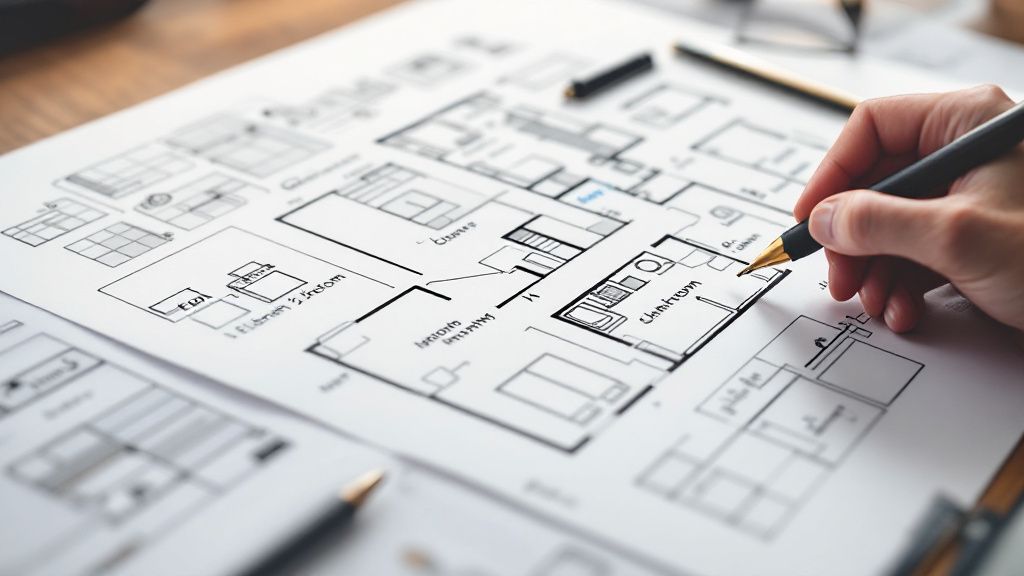
Key Considerations When Planning a Tiny Home
When planning a tiny home, assessing your lifestyle preferences is crucial to creating an ideal living space. You need to determine the primary purpose of your tiny house; for instance, whether it will be a permanent residence or a mobile abode on wheels. The purpose significantly influences your choice between different tiny house design ideas and tiny home blueprints, dictating space allocation, materials, and the functionality integrated into the design.
One challenge in choosing tiny home plans is effectively utilizing limited space without sacrificing comfort. This issue can be addressed by focusing on efficient tiny house interior designs that incorporate multi-functional furniture and smart storage solutions. These elements ensure that every square foot is optimized, providing both utility and aesthetic appeal. Exploring affordable tiny homes and the best tiny house kits can give insights into innovative design solutions tailored to your specific needs.
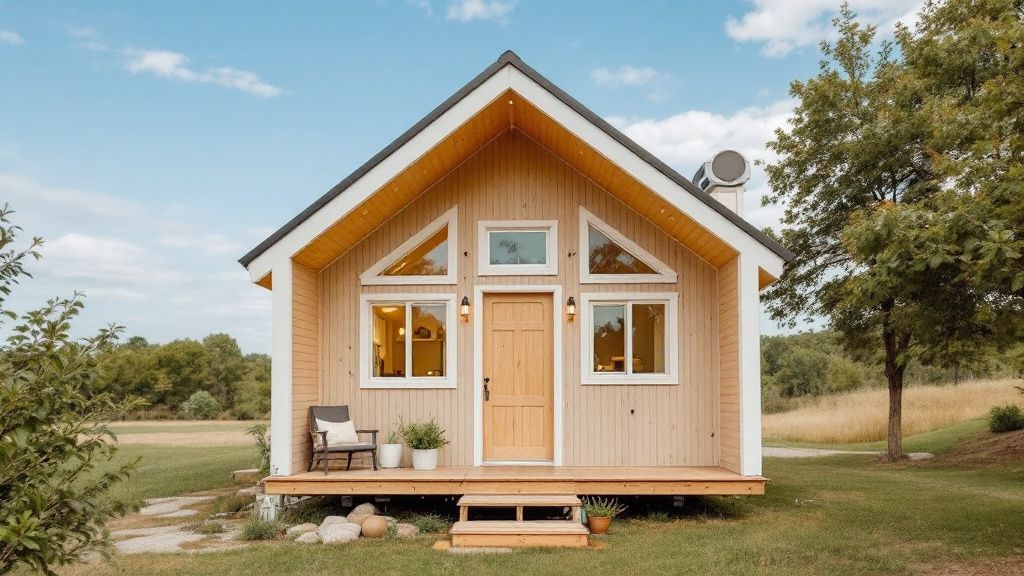
Diverse Tiny Home Plans for Every Lifestyle
Tiny home plans offer a spectrum of choices to suit diverse lifestyles. Some people prefer stationary tiny homes with intricate tiny house interior designs focused on comfort. These are often perfect for those who want to embrace a minimalist lifestyle while remaining stationary. If you're drawn to a mobile lifestyle, tiny house on wheels plans provide the freedom to explore new places without leaving the comfort of home behind you.
Seasoned travelers and adventurers may find that the best tiny house kits incorporate features that adapt to various terrains and climates. This adaptability ensures that no matter where your journey takes you, your home remains a sanctuary. Those interested in affordability will find value in exploring affordable tiny homes that make living minimally financially attainable.
In the next few years, tiny home living is likely to redefine traditional housing norms. As more individuals and families seek eco-conscious and economical housing solutions, diverse tiny home plans will continue to expand and evolve. This shift not only broadens the appeal of tiny homes but also encourages innovation within tiny house design ideas and tiny home construction plans. Embracing this movement promises an exciting era in housing.
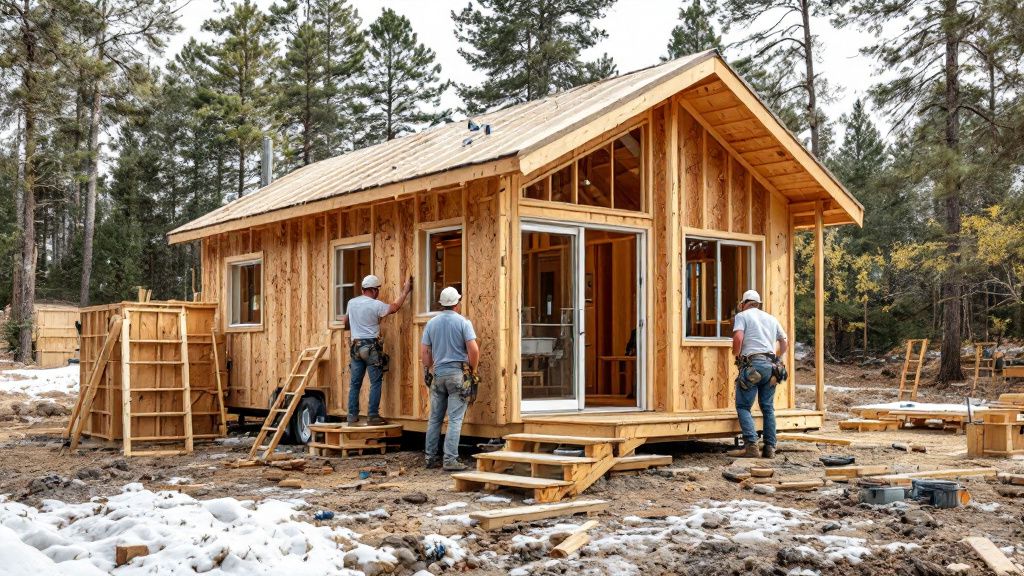
The Building Process of a Tiny Home
The building process of a tiny home begins with thorough planning and design. Selecting the right tiny home blueprints is essential to establish the foundation for your project. You need to balance practicality with creativity, choosing tiny house design ideas that fit your lifestyle while adhering to your budget. This step involves determining the layout, materials, and features your tiny house will incorporate.
Securing the necessary permits and understanding local building regulations is another critical phase in the process. These requirements can significantly influence your choices in tiny home construction plans. It's important to ensure your project complies with zoning laws to avoid complications down the road. This diligence lays the groundwork for a smooth building experience.
Construction begins with laying the foundation, particularly important if you're building a stationary home. For instance, when crafting a tiny house on wheels, you'll start by selecting a robust trailer as a movable foundation. This decision will guide the structural integrity and mobility of your tiny house, making it critical to chose carefully at the outset of the building process.
As construction progresses, attention to detail shapes your space. Installing electrical, plumbing, and insulation systems requires precision to ensure functionality and comfort. For example, using energy-efficient fixtures aligns with sustainable tiny house interior designs. Each step, from framing to finishing touches, reflects personal style and practical needs, transforming plans into a livable space.
Navigating the building process can be simplified by opting for the best tiny house kits. These kits provide many of the materials and components necessary for your project, along with detailed instructions. Investing in a kit can expedite building, offering convenience and guidance for those new to construction. You gain the satisfaction of constructing your own home, with expert support along the way.
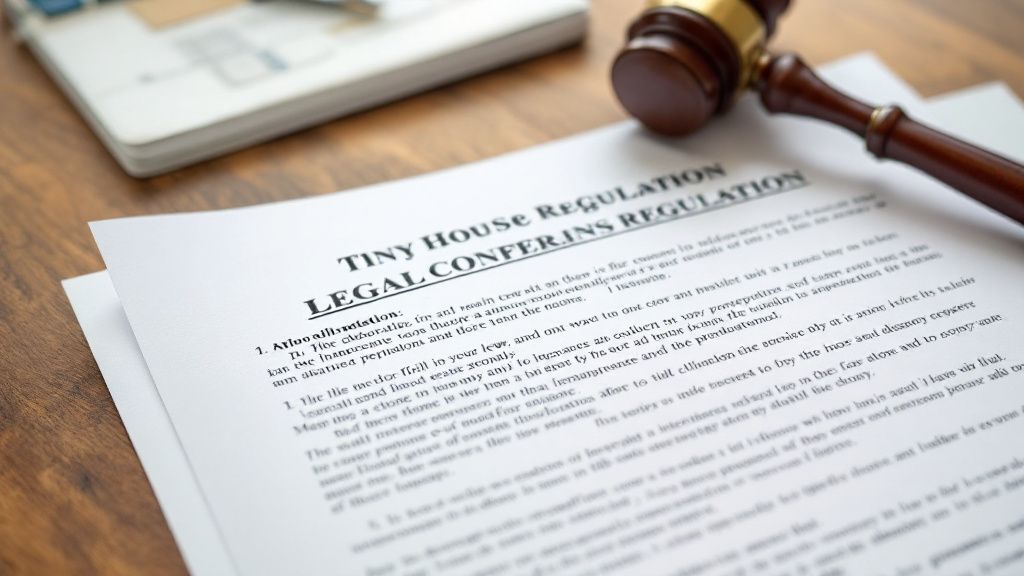
Legal Considerations and Zoning Regulations
Navigating legal considerations and zoning regulations is a crucial aspect of tiny home living. Comprehending these requirements ensures your tiny home is both legal and safe to inhabit. Local laws dictate the kinds of structures permitted, influencing choices in tiny home construction plans. To streamline the process, research is vital before breaking ground, helping you avoid unexpected barriers that could disrupt your building journey.
Understanding zoning laws is particularly relevant if you are considering tiny house on wheels plans. These laws can differ significantly across municipalities, affecting where you can park or permanently place your tiny home. Some areas have embraced the tiny house movement, offering flexibility in zoning, while others impose stricter restrictions. Becoming familiar with these local nuances is key to a smooth project.
Did you know? A survey by the American Tiny House Association found that 86% of tiny homeowners reported challenges with zoning and building codes. This statistic highlights the importance of thoroughly understanding local regulations. Consulting with professionals or local authorities can help clarify these requirements, ensuring compliance as you proceed with your project.
For those eyeing affordable tiny homes or the best tiny house kits, aligning your plans with local bylaws is a fundamental step. Whether you’re utilizing tiny home blueprints or building from scratch, ensuring your home fits within legal parameters protects your investment. Proper planning in this phase paves the way for a successful realization of your tiny home dreams.
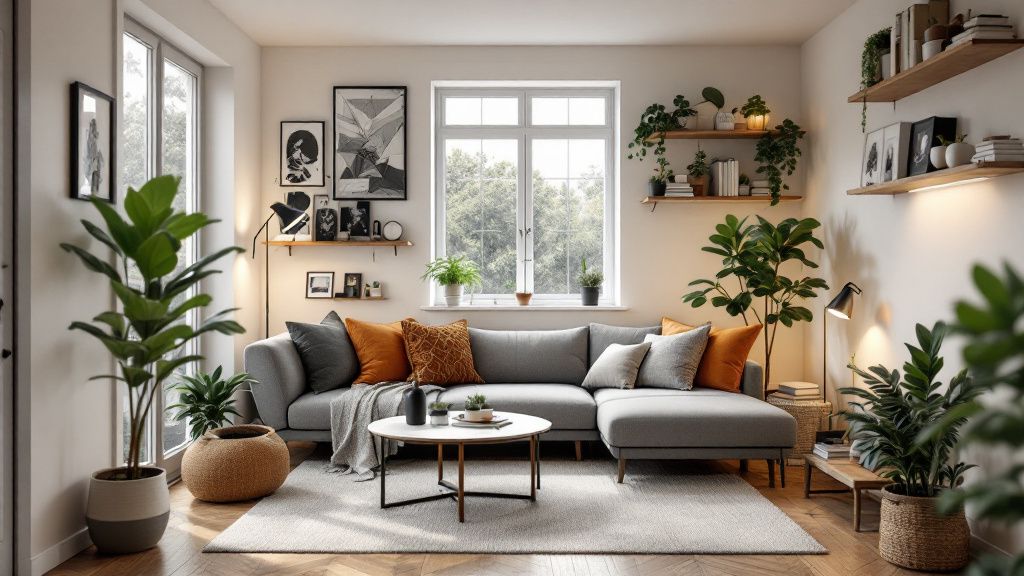
Innovative Interior Design Ideas for Tiny Spaces
How do innovative interior design ideas impact the functionality of tiny spaces? In tiny homes, every design choice is pivotal in maximizing usability without compromising style. Space-saving solutions like built-in furniture and multifunctional pieces are fundamental. By incorporating such elements, your tiny house can be a creative manifestation of efficiency, transforming each corner into a purposeful area while maintaining aesthetic appeal.
Considering vertical space is another brilliant strategy in tiny home living. Shelving systems and lofted areas provide additional storage or sleeping quarters without encroaching on floor space. This approach not only enhances storage capacity but also leverages the full potential of your home’s architecture, making it a hallmark of tiny house design ideas that prioritize both form and function.
Light plays a critical role in influencing the perception of space. Natural lighting through strategically placed windows can make your tiny house feel more spacious and inviting. By integrating mirrors and lighter color palettes into your design, you can further amplify the sense of openness. Such tiny house interior designs create a warm and airy atmosphere that belies the compact size of your home.
Incorporating flexible partitions can help delineate areas without permanent fixtures. Sliding doors or curtains offer privacy and adaptability to change configurations as needed. These features in tiny home designs ensure that each part of your home can serve multiple purposes, allowing for dynamic usage that aligns with your unique lifestyle needs.
Innovative furniture solutions, such as fold-out desks or retractable cabinets, optimize every inch of a tiny space. These designs adapt to daily activities, enhancing comfort and practicality. By choosing these elements, tailored to your preferences, your tiny home becomes a personalized retreat, reflecting thoughtful design that elegantly meets the demands of compact living without feeling confined.
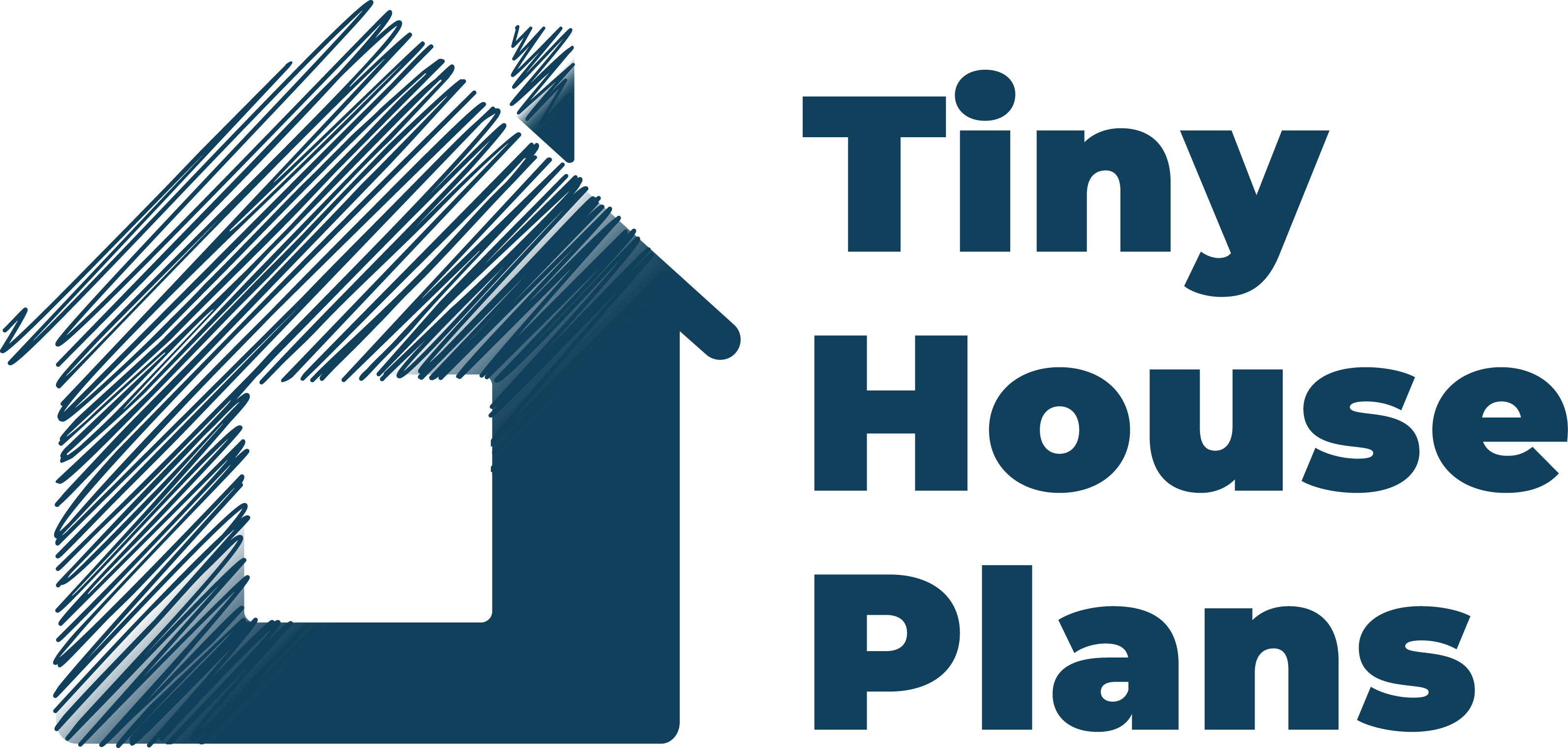




Share: